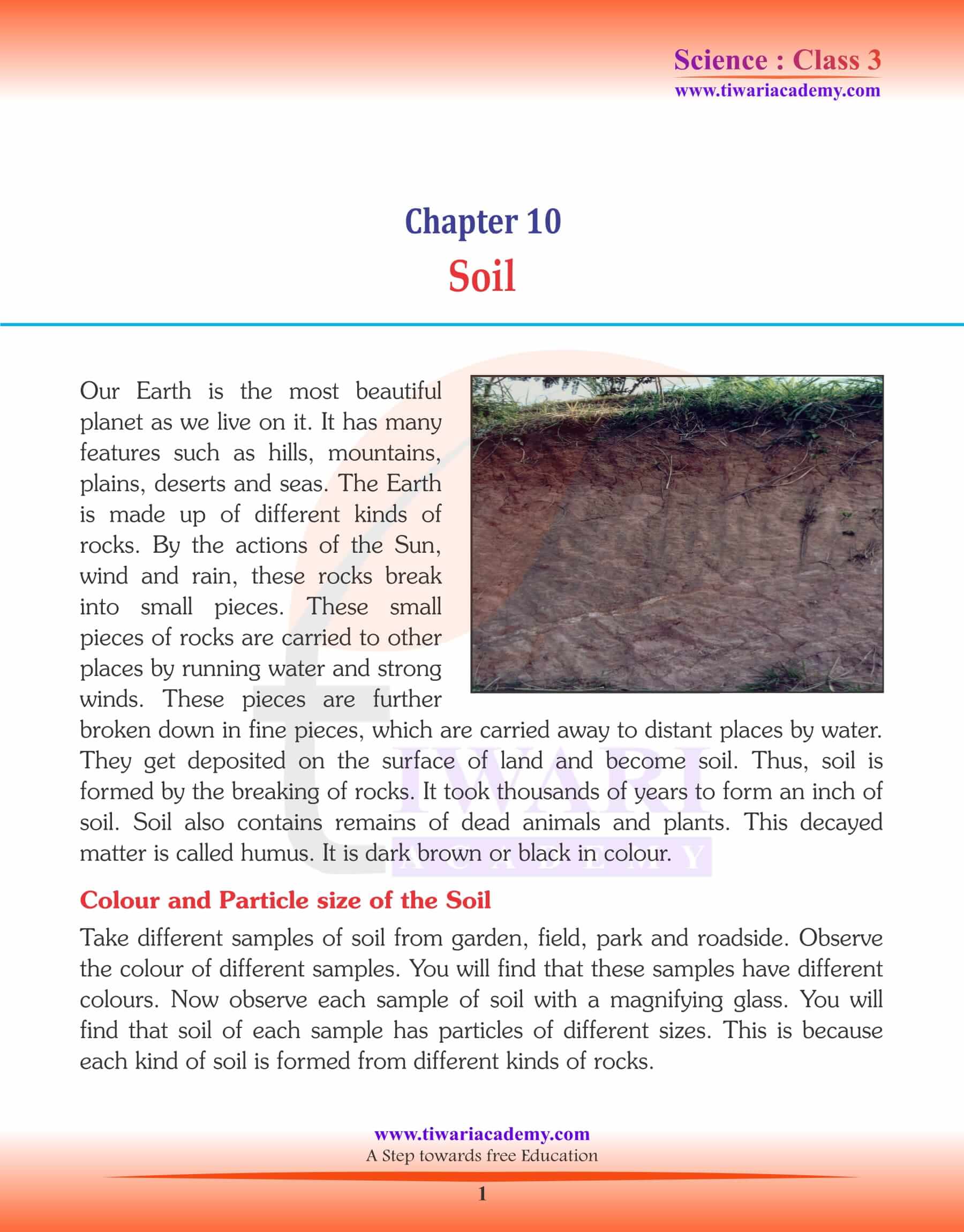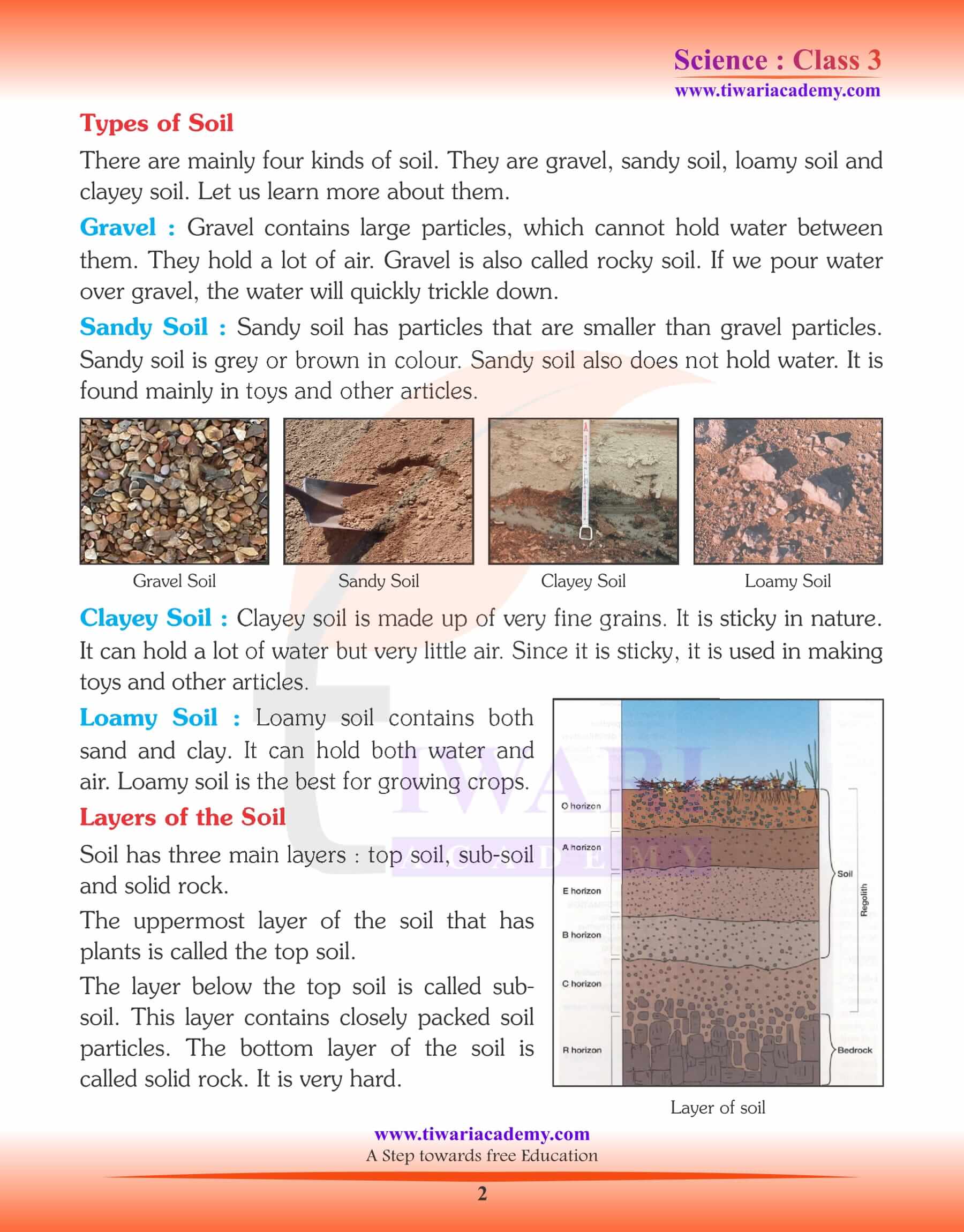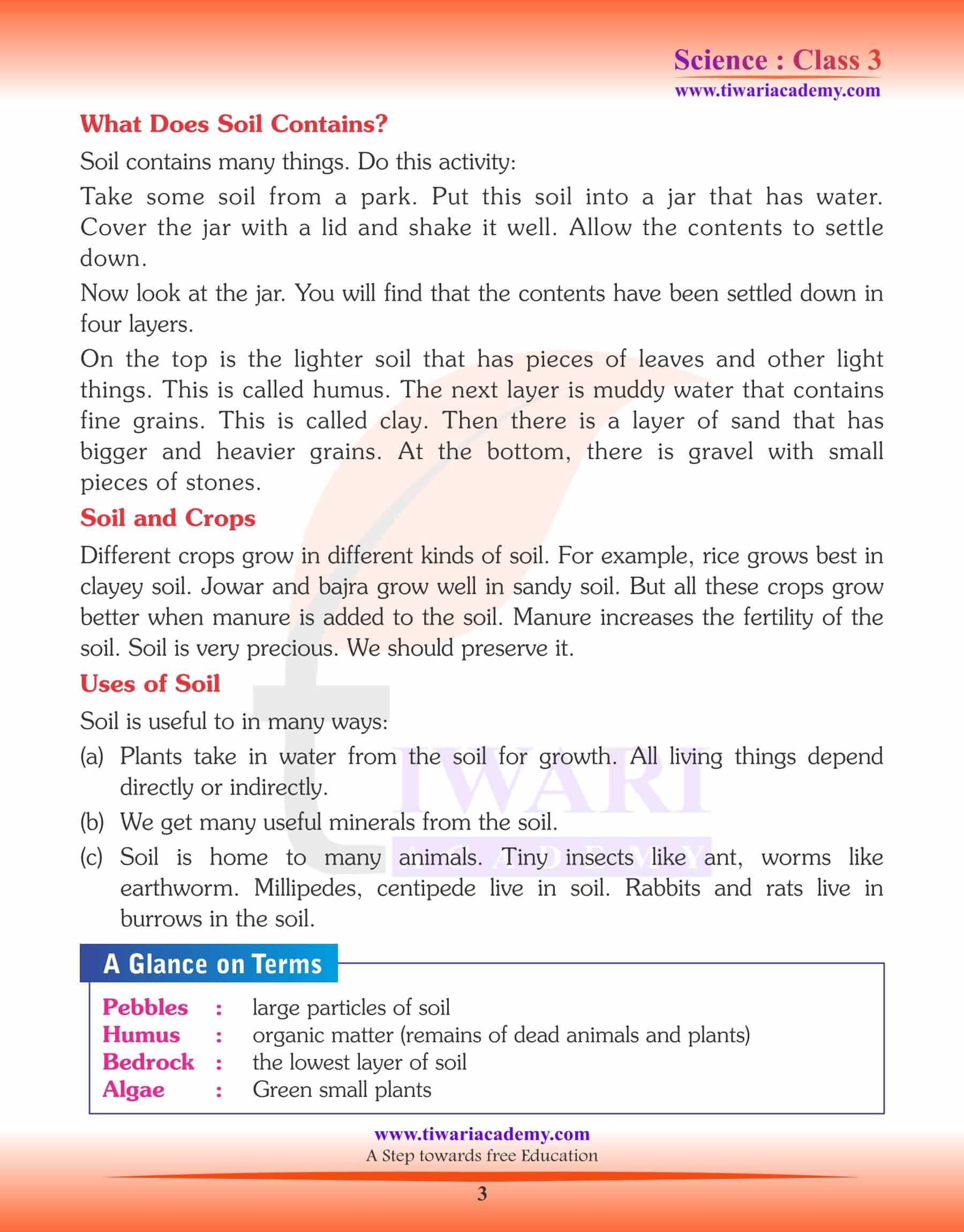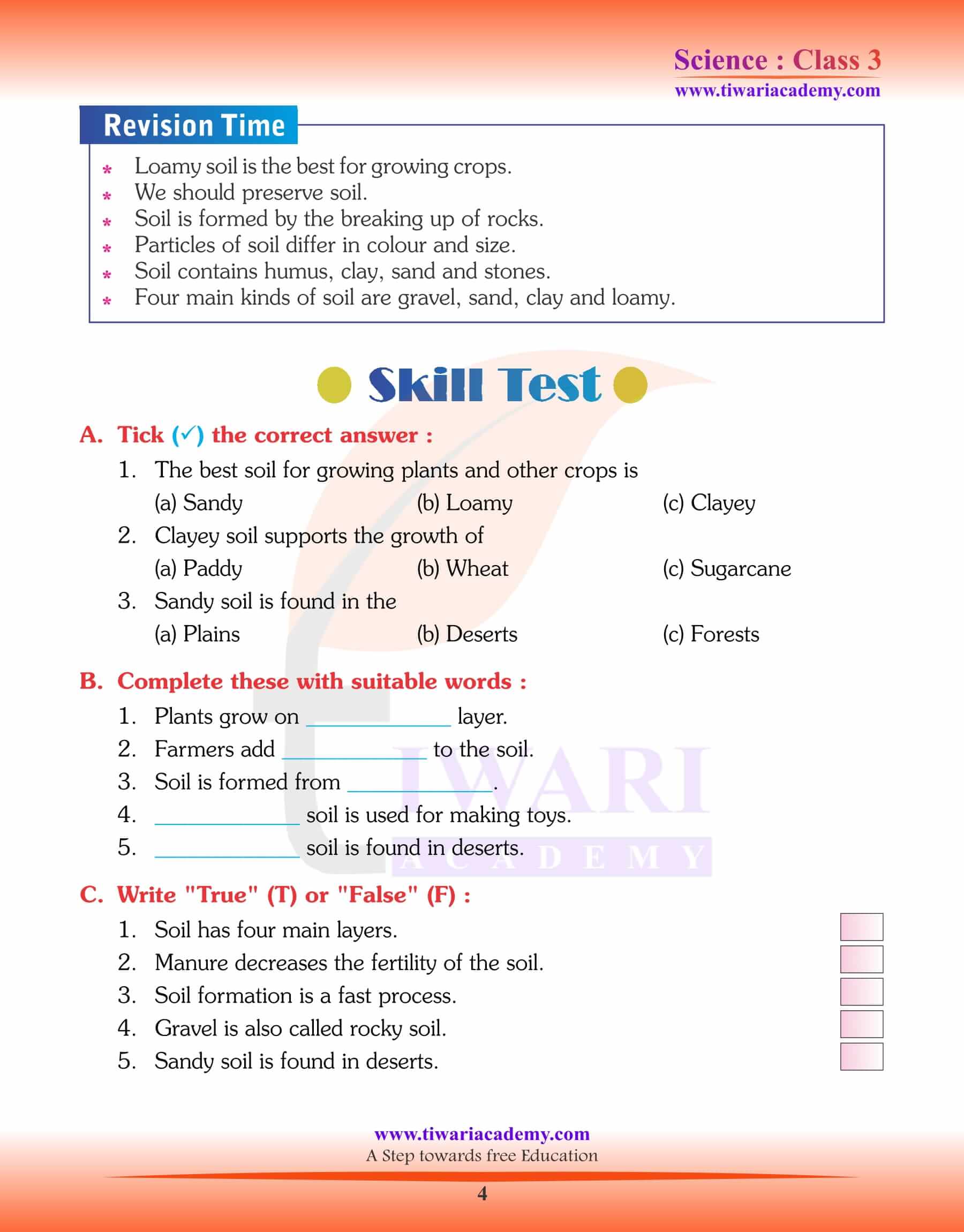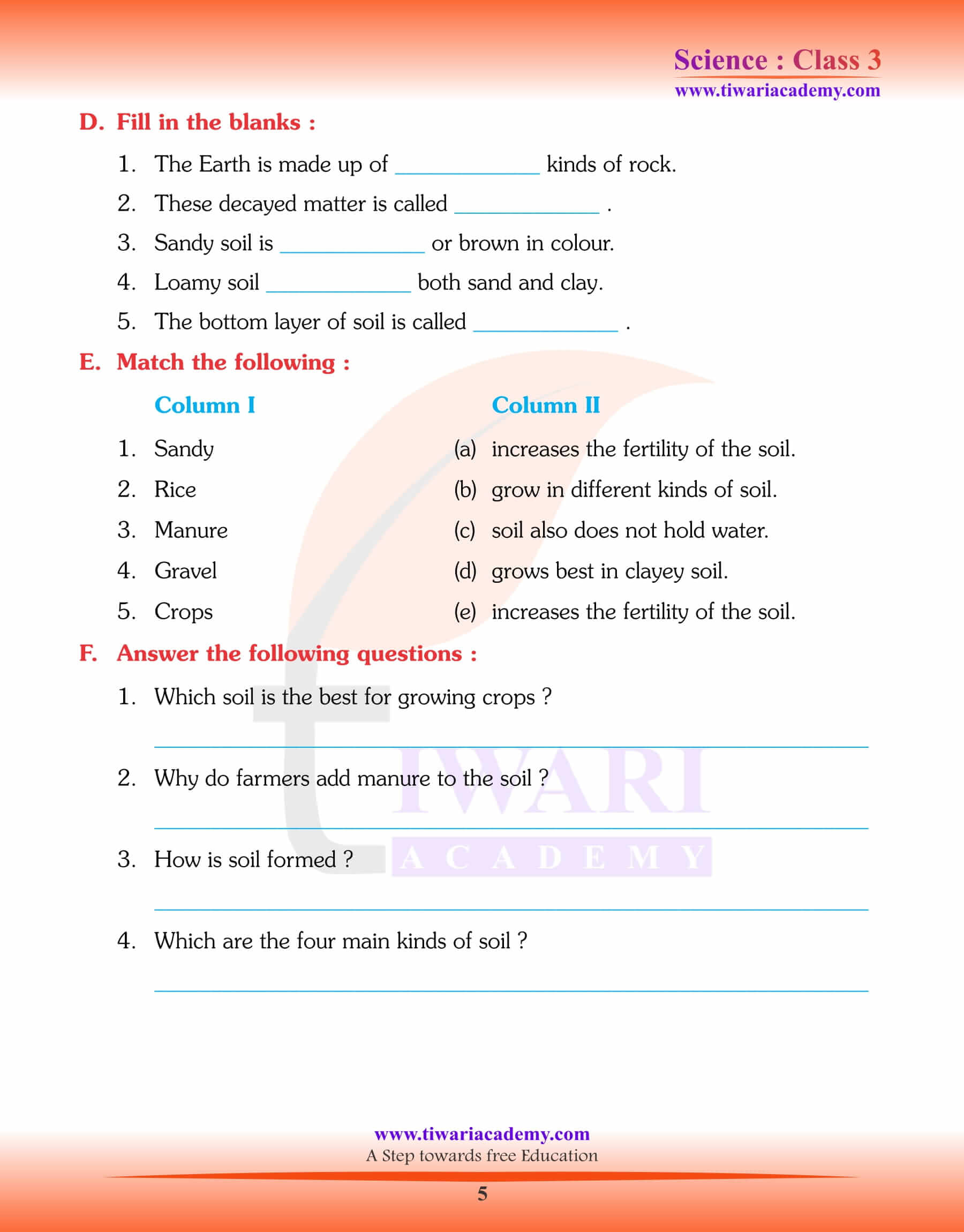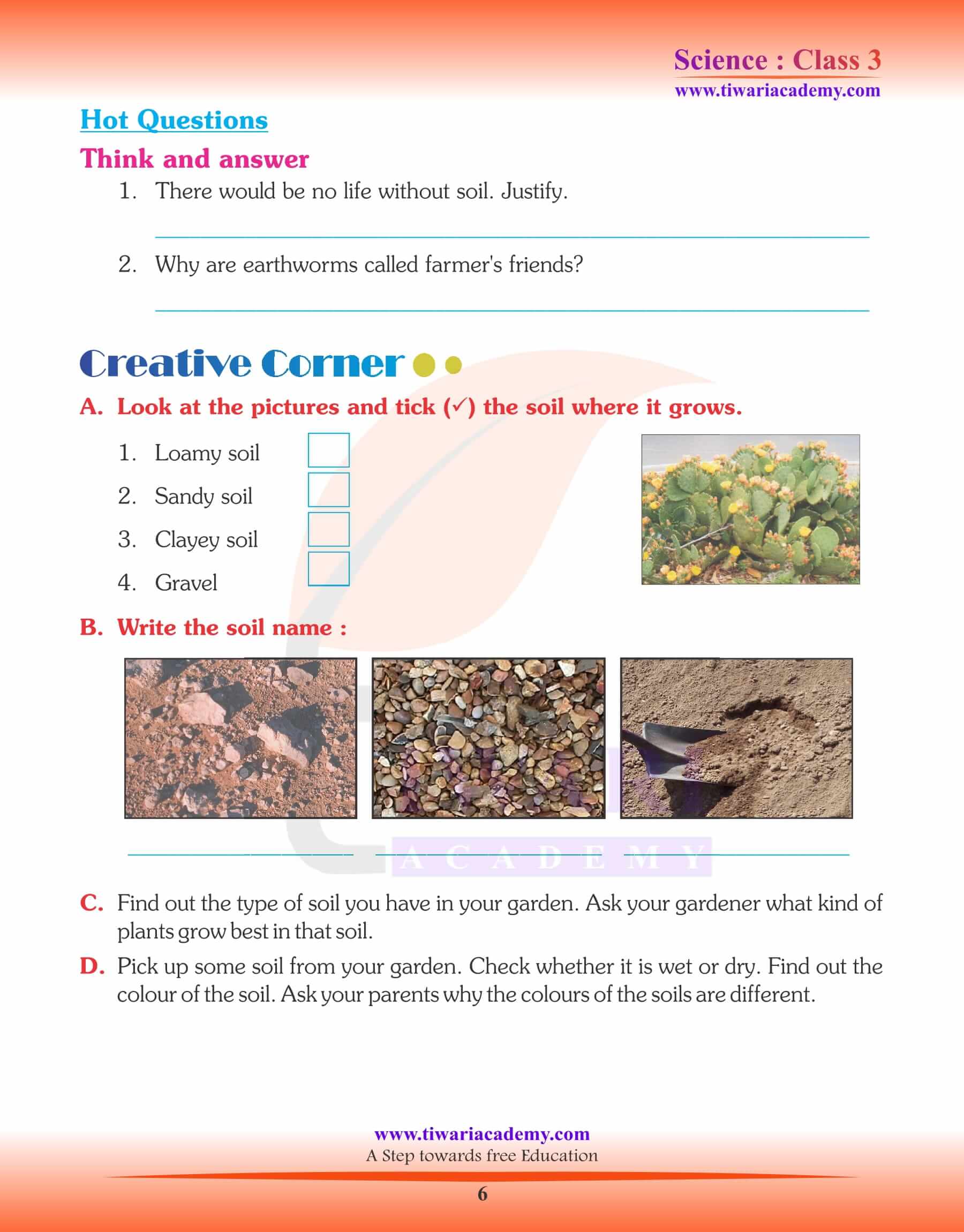NCERT Solutions for Class 3 Science Chapter 10 Soil updated for new session 2025-26. Class 3 Science solutions are useful for CBSE as well as the State board. Students can learn and revise the topics related to layers of soil, types of soil, and their uses. The reading contents are free to use without any login. Students can use it online or offline in both modes.
Study Material for Class 3 Science Chapter 10
Class 3 Science Chapter 10 Soil
Soil
The Earth is made up of different kinds of rocks which contain soil, minerals etc. Soil is the uppermost soft layer of the ground.
Formation of Soil
Soil formation is a long process. The process of soil formation goes on and on but quite slowly. We generally do not notice this process.
1. Soil is formed from the rocks. The heat of the sun, rain and wind act upon the rocks. These rocks gradually break into small pieces. These small pieces break further into very small pieces.
2. Small pieces of the rocks are carried around by wind and water. The pieces rub against each other till they become tiny particles of soil.
3. With the passage of time, these small particles get mixed with the dropped leaves and the remains of animals. This mixture is called soil. It also contains water in a small amount.
4. This process goes on and on in the nature. But the process is very slow. It takes millions of years in the formation of one inch of soil.
Types of Soil
On the basis of the quantity of sand, clay and humus present in the soil we can divide soil into three main types. These are sandy soil, clayey soil and loamy soil.
Soil and Crops
Different crops grow in different kinds of soil. For example, rice grows best in clayey soil. Jowar and bajra grow well in sandy soil. But all these crops grow better when manure is added to the soil. Manure increases the fertility of the soil. Soil is very precious. We should preserve it.
Uses of Soil
Soil is useful to in many ways:
(a) Plants take in water from the soil for growth. All living things depend directly or indirectly.
(b) We get many useful minerals from the soil.
(c) Soil is home to many animals. Tiny insects like ant, worms like earthworm. Millipedes, centipede live in soil. Rabbits and rats live in burrows in the soil.
Important Points
1. Soil is the uppermost layer of the ground.
2. It is very important for the growth of plants.
3. It gives nutrients and water to plants.
4. Soil formation is a long process.
5. There are mainly three types of soil – sandy, clayey and loamy.
Select correct option for given questions:
Soil is the ____________ layer of the ground.
What does soil give to plants?
Soil formation is a ____________ process.
It takes millions of years in the formation of ____________ of soil.
Write “True” (T) or “False” (F):
1. Soil has four main layers.
2. Manure decreases the fertility of the soil.
3. Soil formation is a fast process.
4. Gravel is also called rocky soil.
5. Sandy soil is found in deserts.
Answers:
1. F
2. F
3. F
4. T
5. T
What is soil?
Soil is the uppermost soft layer of the Earth.
What is the importance of soil?
Soil is very important for the growth of plants.
How do rocks change into soil?
The heat of the sun, rain and wind act upon the rocks. These rocks gradually break into small pieces. These small pieces break further into very small pieces. Small pieces of the rocks are carried around by wind and water. The pieces rub against each other till they become tiny particles of soil.
